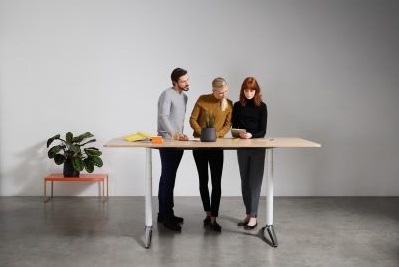
 The last decade has seen the office space evolve from an often bland environment with identikit work stations to a more dynamic environment that reflects a company’s brand identity and caters for new styles of working. The increasing move towards flexible working, hotdesking and open plan workspaces has brought with it incredible furniture innovations.
The last decade has seen the office space evolve from an often bland environment with identikit work stations to a more dynamic environment that reflects a company’s brand identity and caters for new styles of working. The increasing move towards flexible working, hotdesking and open plan workspaces has brought with it incredible furniture innovations.
Some of these modern furniture innovations to watch out for in 2020 include:
The traditional meeting room is no longer a must-have in the modern office but employers should still ensure that there is a space that can meet the same needs of staff. Meeting pods provide a flexible solution for gatherings of up to 8 people and thanks to the privacy they provide, can cater from everything from an informal team catch up over coffee to a confidential client meeting.
The rise of the open plan office has done wonders for team building and collaboration but sometimes privacy is necessary. Whether an employee needs to make an important phone call or settle down to meet a deadline away from the hustle and bustle of the main office, a solo user work pod is an attractive and functional addition to any office.
As we become more aware of the health risks associated with sitting for long periods, many employers are introducing standing meetings as a way to increase the amount of productive time employees spend away from their desks. Not only is there a health benefit, but studies have shown that standing meetings tend to be shorter and those present more focused. A high meeting table is a perfect accompaniment to standing meetings – offering space for participants to use laptops and notebooks without having to strain.
A great alternative to the static high meeting table, a sit stand meeting table can be adjusted to meet the needs of both sitting and standing meetings. Whilst standing meetings are fantastic for shorter periods, much longer meetings should be at least partially seated. Sit stand meeting tables
are the perfect option when there is not space for two tables and they work well in either a meeting room or open office environment. When paired with adjustable chairs or stools, individuals can choose whether they would rather sit, perch or stand as they take part in their daily meetings. Choose a table with a smooth electric adjustable function so employees have convenience and flexibility when it comes to reaping the health and productivity benefits of the ability to stand.
Lismark offers a wide range of meeting pods, work pods, high meeting tables and sit stand meeting tables. If you have any questions or would like a brochure of our modern office furniture products, please get in touch today.

 The negative effects of sitting down for long periods has become common knowledge in offices over recent years. To combat these issues, ergonomic standing desk options have hit the market with force and people are taking a new approach by standing for at least part of their working day.
The negative effects of sitting down for long periods has become common knowledge in offices over recent years. To combat these issues, ergonomic standing desk options have hit the market with force and people are taking a new approach by standing for at least part of their working day.
Standing meetings are not an entirely new concept with agile development teams favouring a daily stand-up meeting to keep things short and on point and some businesspeople choosing to have walking meetings just to fit them into a busy schedule.
As they have become more popular over time new benefits of holding standing meetings have come to light. Studies show that standing meetings are not only shorter than those sat down but are also more constructive. Research suggests that this is driven by increased energy levels and sparked creative thinking when standing – not to mention the benefits for employees’ posture. Traditionally, meetings have always been sat around a standard desk-height meeting table. However, those within the office furniture industry, us included, have seen a huge increase in the popularity of high meeting tables, those used whilst sitting on stools or even standing. It seems that businesses are starting to realise the benefits associated with standing meetings. Sit stand meeting tables have also risen in popularity as they can be raised for shorter standing meetings or set to a seated height for longer gatherings.
Standing meetings have been shown to be 33% shorter than sitting meetings, and usually take no longer than 15 to 20 minutes.
There is no chance during a standing meeting for staff members to take a quick peek at their mobile, tablet or laptop to check for emails and messages. With fewer opportunities for distractions, staff are more engaged.
A standing meeting can burn up to 50% more calories than a sitting meeting. Compared to sitting in a chair, standing allows for improved blood circulation, oxygen flow, better posture and muscle engagement – all of which can keep you more alert and lead to better creative thinking. Just by using meeting time to stand, this can provide the right healthy balance between standing up and sitting down during a day. It is important to consider how long the meeting may run however as you may want to sit for at least a portion of lengthier meetings.
If you like the idea of a standing meeting with the convenience of a table to take notes and use laptops for presentations it’s well worth considering a sit stand meeting table or a high meeting table.
With a top height of 1050mm, high meeting tables are perfect for creating a relaxed vibe in your meeting space. The table is flexible in that it can be used by either sitting on high stools or standing. And so, the table becomes multi-purpose – able to be used for standing meetings and for employees to relaxing over coffee.
If you’re becoming tired of unproductive meetings, maybe it is time to make a change – starting with re-thinking your meeting spaces.
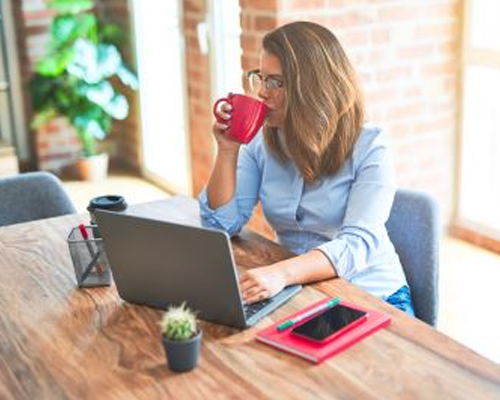
 Hot desking is becoming an increasingly popular choice for employers, offering high levels of flexibility enabled by advances in tech that allow us to work from anywhere at any time. However, it’s not a one-size-fits-all solution for every workplace, and before employers take the plunge, some careful planning is a must.
Hot desking is becoming an increasingly popular choice for employers, offering high levels of flexibility enabled by advances in tech that allow us to work from anywhere at any time. However, it’s not a one-size-fits-all solution for every workplace, and before employers take the plunge, some careful planning is a must.
There are significant advantages to hot-desking. One of the largest is that it generally leads to a more efficient use of the space you have, thereby saving on rental and utility costs.
Designed in the right way, hot-desking can also create a friendlier environment where staff benefit from the opportunity to mix with different colleagues every day. It also means that employees aren’t tied to sharing a space with someone who they may not enjoy working with. Ultimately, when it’s done well, hot-desking can result in a more collaborative way of working and a happier team.
The aesthetics of the workplace can also benefit, making it an attractive option for business owners keen to create a modern, pared-back environment to reflect the values of their brand. When people don’t have their own individual spot, they have no option other than to keep their surroundings tidy and streamlined – no more stacks of paperwork and stained coffee cups!
For every pro, there is a con and hot-desking just doesn’t suit every personality or business type. Generally, this new approach to working tends to be favoured by millennials who may be more comfortable with using mobile technology and working flexibly, whether it be from home or a new spot in the office each day.
There is also the risk that hot-desking can depersonalise the workplace, making it feel more transient. Many people feel more comfortable creating their own working space with belongings such as plants, photographs and stationery around them. This can also offer a sense of permanence, with some people arguing that hot-desking could give employees a message that they are not valued enough to have their own desk.
It’s also important to carefully consider any potential challenges around how hot-desking will affect access for employees with reduced mobility or other physical impairments such as poor vision.
That said, many people who are initially resistant to the concept are won over when they try it out and begin to feel its benefits.
Ultimately, the success of hot-desking largely depends on how well the available space is laid out and how the concept it is presented and implemented. It is also usually a prerequisite that at least some staff are partly home or field-based and/or able to work flexible hours to ensure that there is enough space for everyone who is working in the office at any one time.
In a hot-desking environment, it’s also important to provide alternative spaces for meetings and other tasks that need to take place away from the main hub of activity. For example, people will require higher levels of privacy when dealing with confidential or controversial issues, taking important phone calls or collaborating with others.
With the above in mind, here are our recommendations for office furniture options that can make hot-desking work for you.
Choose from single desks, bench-style work stations and moveable desks with built-in cable access. Whichever style, it’s important that they are stationed near power points and can facilitate working on laptops and other mobile devices.
Provide a hot-desking space and an opportunity for employees to tackle the risks of prolonged sitting with a sit stand desk or sit stand meeting table.
Individual work pods and meeting pods for groups offer enclosed and private working spaces.
A break-out area with comfortable seating is a must in a hot-desking environment to give employees an alternative space to work and relax in.
As an undeniably attractive and cost-effective option for the modern workplace, it’s well worth giving some thought to whether hot-desking could be just what you need to breathe new life into your workplace whilst reducing your outgoings.
If you’re looking to implement hot-desking in your office, get in touch today to discuss the best furniture options for your space.
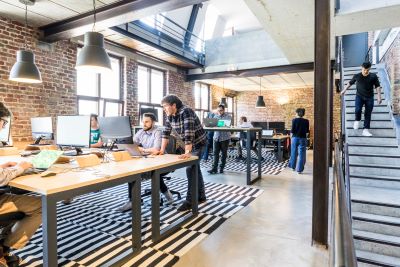
 Open spaces, flexible working and breakout zones are gradually becoming the norm in offices across the country and this is no surprise given how much of the workforce is now comprised of millennials.
Open spaces, flexible working and breakout zones are gradually becoming the norm in offices across the country and this is no surprise given how much of the workforce is now comprised of millennials.
This new wave of personnel is becoming bored with generic working environments and place greater importance on the culture and atmosphere than ever before on where they choose to work. I fact, a recent study found that over a fifth of millennials declined a job offer simply because the business had a poor workplace design and atmosphere.
Business must move with the times to provide an appealing place to work for millennials. Not only so that they don’t decline your job offer, but so that space can be used to its full potential. What puts most off change is the fact that they must invest time and money into such projects, but that doesn’t have to be the case. There are some quick wins for attracting millennials to your workplace:
Conference rooms with long tables and dozens of chairs still have their place but aren’t ideal for millennials who want frequent team gatherings in a more relaxed setting. Not only are breakout zones ideal for holding meetings, but they can also provide a place for taking breaks and making phone calls – making the best possible use of your office space.
Alternative colour schemes and unconventional soft furnishings will make your office space stand out and present the company as creative. Think indoor trees, mind maps, bean bags, artwork, chalkboards, board games; the options are limitless and much of it will depend on your company’s ethos.
Cubicles should now be a thing of the past. Communal spaces which support communication and don’t restrict workers to a desk are preferred by millennials. However, it’s important to offer areas where employees can focus and enjoy some peace amongst the noise of the office. When concentration is needed and deadlines must be met, a quiet area or privacy pod is the ideal retreat.
The line between millennials’ work and home life is far more blurred than for generations before. Many out-of-office friendships are formed at work and an office that fosters an environment to encourage this is great for improving company culture. Facilities or activities that can be easily incorporated into the office such as pool tables, games machines and social zones for breaks are all appreciated by millennials. A greater work from home and flexible working culture also means that only providing static desks with desktop computers may no longer be the best solution. We recommend implementing work booths, larger communal desks or sit stand desks which are perfect for working at with a laptop.

 Business owners and employees all have a responsibility to consider ways in which they can make their office more environmentally friendly. Although not required by law, it is good practice to have a workable environmental policy in place to help ensure that workplaces are doing what they can to reduce their carbon footprint.
Business owners and employees all have a responsibility to consider ways in which they can make their office more environmentally friendly. Although not required by law, it is good practice to have a workable environmental policy in place to help ensure that workplaces are doing what they can to reduce their carbon footprint.
Measures like going paperless, setting up recycling facilities and reducing waste are all great ways to start, but it’s also important to think about sustainable procurement so you can make ethically responsible choices when making purchasing decisions for the workplace.
There is a growing trend of manufacturers becoming increasingly aware of the important role that they play in creating a more ecologically friendly supply chain. From sourcing sustainable materials to reducing packaging, many companies are taking their environmental responsibilities seriously. So, if you are committed to reducing your carbon footprint, when looking for office furniture, it pays to do your research.
Desks, chairs, sofas – in fact almost anything you find within an office building – can be manufactured from renewable, recyclable or sustainably sourced materials. So, check out what each product is made from before purchase. It’s also worth looking to see and see if the manufacturer or supplier has an environmental policy in place – this can often be found on the website.
Office furniture can be made from a variety of materials, but it’s likely that at least part of a desk, chair or workstation will include some wood. Most ethically sourced products that incorporate wood will have a certification from the Forest Stewardship Council (FSC). This certification guarantees that the wood comes from a sustainable forest and/or has been sustainably harvested so it is an important hallmark to look out for.
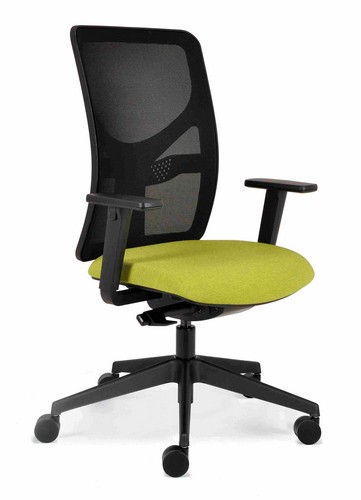
Over recent years we have increasingly moved towards being a throwaway society, but if you are buying cheaper products that frequently need replacing, you need to consider whether this is a false economy. Not only is it damaging to the environment, but it can also end up being a lot more costly over time. It may be a wiser investment both financially and ecologically to purchase higher quality furniture that is likely to have a much longer life.
It’s also important to think about what happens to a piece of office furniture once it comes to the end of its life. Choosing a product with parts that can be recycled makes it a better choice environmentally. For example, both the Solo Ergonomic Task Chair and the Icon Task Chair (pictured) are 95% recyclable at the end of their natural life. Not all manufacturers will include this information in their product description so if you’re not sure just get in touch and we will be happy to help.
Many manufacturers are becoming increasingly resourceful and ecologically minded when sourcing materials. And it’s not just the wood or plastic that can be sustainably produced or recyclable: the way that an office chair or sofa is upholstered can also make a significant difference. For example, one Lismark supplier manufactures environmentally friendly fabrics. In fact, one of their newest fabrics incorporates recycled polyester from used plastic drinks bottles. You can read our blog post on this revolutionary recycled fabric here.
Lighting and heating are likely to account for the largest energy consumption in a standard office, but they can also be managed and reduced easily. Simple measures such as installing LEDs which use 75% less energy and can last more than three times as long as a standard light bulb have an impact. You can even go as far as to install lights controlled by movement sensors to significantly cut energy consumption. These are particularly appropriate in places such as meeting rooms, toilets and kitchens that may not be in constant use.
How you lay out your office can also have an impact on energy consumption. Make the most of natural light by positioning workstations near windows if possible. Keeping workstations away from draughty areas and nearer heat sources can also help keep the office thermostat lower.
Ultimately, creating a more eco-friendly office is about having an overall strategy in place with a range of measures from implementing an ethical purchasing policy to raising staff awareness which, when combined, can make a real difference.
If you want to know more about the eco-friendly office furniture we supply, get in touch today.
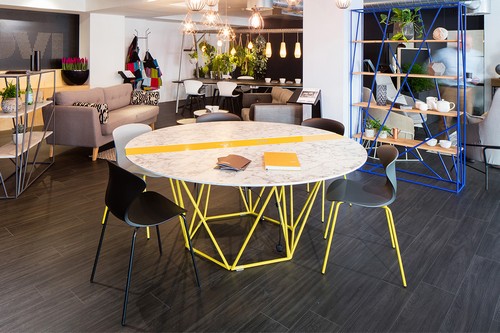
All businesses should strive to be as efficient as possible – regardless of the size of the office. It’s an unfortunate truth that many businesses operate in an office that houses little space, an environment that snaps creativity, productivity and efficiency.
Due to financial restraints, most businesses tend to only upscale business premises once it’s blaringly obvious that they’ve outgrown their current location. And with commercial rents increasing, it’s becoming more difficult for businesses to flock the nest and move into larger premises.
Instead of muddling through in a cramped office space, the better option is to put time into optimising the office space you already own.
So, how do you create an environment that makes employees feel more motivated and productive throughout the working day, whilst making the most of limited office space? As office design and furniture experts, Lismark Office Furniture is on hand to provide you with some useful ways for you to optimise your small office space.
Here is a selection of ways a business can optimise the space in the office:
With a multipurpose space, employees can use the area for catch ups with clients, group meetings and even an alternative working space. Multipurpose spaces allow offices to do more with less space and can add a real tangible boost to productivity.
For open plan offices, a meeting pod can provide relief to workers who need to concentrate in a quiet area and double up as a semi-permanent working space or meeting room.

Office workers spend most of their time indoors so it’s no surprise that an office that is open, has plenty of natural light and is airy performs better. Natural light is a well-known mood booster and also creates a feeling of extra space in a cramped office.
Remove items from windowsills and rearrange desk so that more are positioned close to the windows. If you need some privacy, try sheer blinds or Venetians which can still let light in most of the time.
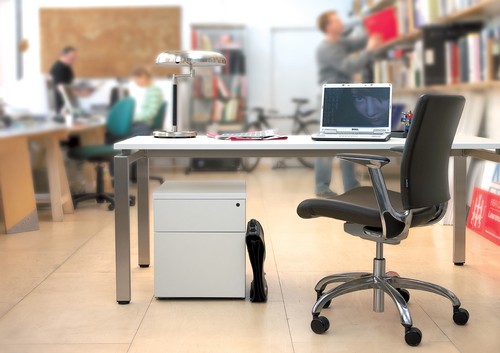
In years gone by, the desk would store an all manner of important files and documents. To cope with the amount of necessary storage, they were heavy duty and contained plenty of compartments for storage.
Because files are now saved on servers and clouds, these desks that eat up plenty of space simply aren’t necessary for the modern day. Where possible, heavy traditional desks should be switched with office desks that are lightweight.
If space is limited, sit stand desks are invaluable for productive working. Not only do the desks aid health benefits, but they can also be extremely useful for meetings within an office space. Standing together at one computer screen can be far more comfortable than huddling around the screen on chairs. 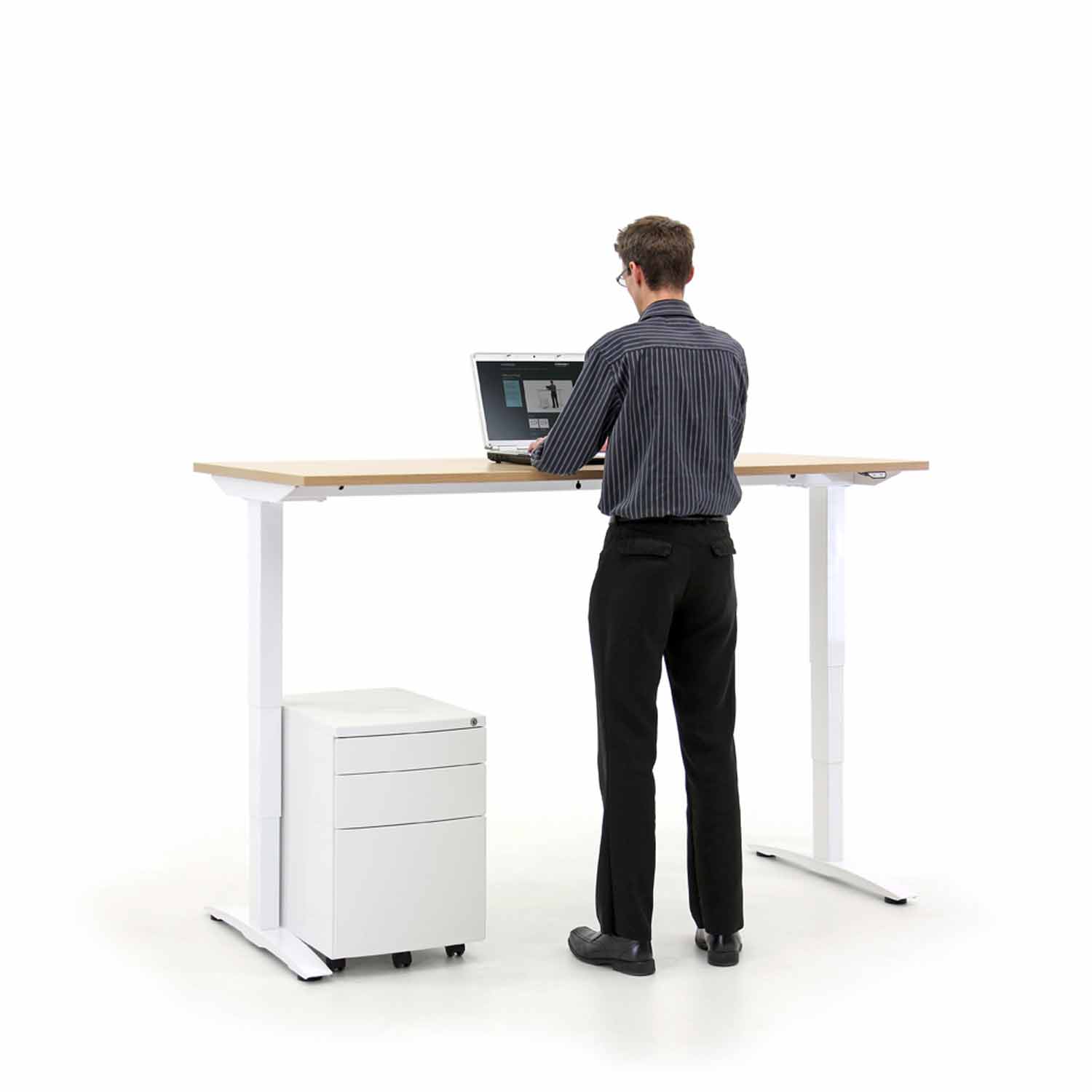
Hot-desking is when personal desks are removed from the office in an effort to save space. It encourages creativity between workers that wouldn’t normally find themselves together and can lead to better team morale and productivity.
Instead of using traditional desks for individual workers, large communal desks that can accommodate more staff. Spaces on these large desks are assigned on a ‘first come, first served’ basis.
Hot desking doesn’t have to solely come in the form of large communal desks, folding tables and laptop tables are space-saving options that can also suit hot-desking workers.
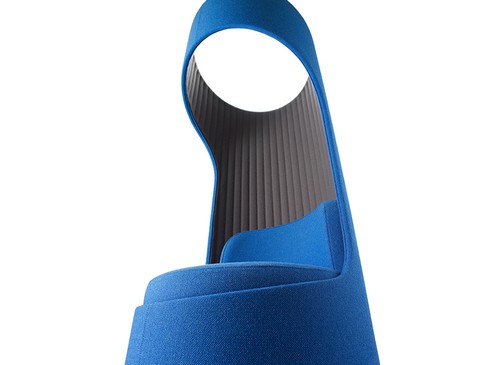
A well-designed office should make use of every possible space – even corridors, staircases and landing areas. These areas that are just used as walkways to connect your office can be reimagined into productivity-boosting areas.
Novelty phone booths for making calls away from the hustle and bustle of the main office could be installed in corridors and beanbags and stools could be arranged in lading areas for impromptu meetings.
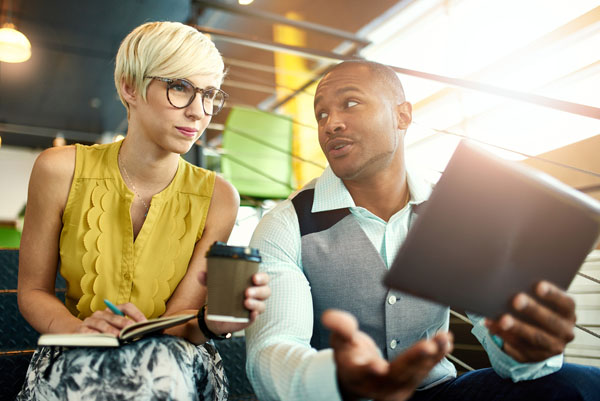
 The office is where we spend most of our hours, so the place in which we work has a direct impact on our happiness and wellbeing. If your workers had the choice, which do you think they’d prefer, an open, welcoming office that’s well designed or an overcrowded office with minimal effort to increase morale?
The office is where we spend most of our hours, so the place in which we work has a direct impact on our happiness and wellbeing. If your workers had the choice, which do you think they’d prefer, an open, welcoming office that’s well designed or an overcrowded office with minimal effort to increase morale?
The office design realm is an important one for both HR professionals and business owners to examine. Ensuring that the office is designed well and houses all of the facilities that workers desire can influence productivity as well as attract the best new talent to work for your company.
It is reasons like these why business owners are taking inspiration from creative agencies and companies like Google who have moulded beautifully designed fun offices. Although slides might not be appropriate, there are easy additions that employees want in the office.
As well as the necessary items such as a functional desk, comfortable chair and refreshment facilities, what are some of the other things employees want in an office?
Being stuck inside all day can be a drain on morale, so why not bring a sense of the outdoors in? An easy fix is to add a few plants and indoor trees around the office. We humans are hardwired to be drawn to nature, so being surrounded by natural light and vegetation can do wonders for boosting moods.
If you’re questioning the value of adding some plants into your office, recent studies have found that plants can increase office productivity by as much as 15 per cent!
Adding home comforts to the workplace is a trend that has come with the rise of the Millennials. The separation between work and home is becoming finer with many offices becoming more relaxed and casual.
The office is filling up with ‘home away from home’ comforts and entertainment for workers to use on their breaks. Some of the most popular:
By adding some of these facilities, those busy periods with long shifts won’t seem so hard.
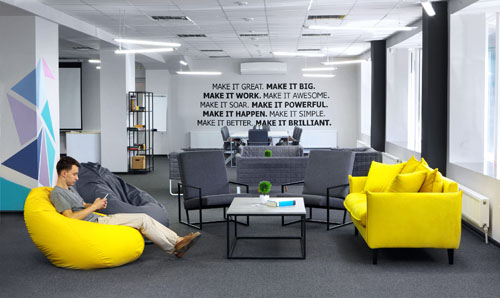
A breakout space is an area that allows employees to get away from their desk and engage in anything from brainstorming sessions and team catch-ups to private conversations in person or on the telephone.
The uses of a breakout space are endless and can even be used for informal purposes such as being a space for employees to ‘switch off’ from a stressful task for ten minutes.
The breakout area doesn’t have to be a large space, just enough to house some comfortable breakout furniture.
Technology has changed the world that we live in and if businesses want to attract and retain top employees, keeping on top of technological needs is a must. Despite the evolving technological landscape and reliance on technology in the office, it seems that not enough is being done to give employees what they need for their job.
Employees can soon become frustrated if their quality of work is being jeopardised by the lack of tools available to them. Technology can hold a company back but having the latest software and technology for your workforce can push it forward.
Regular checks
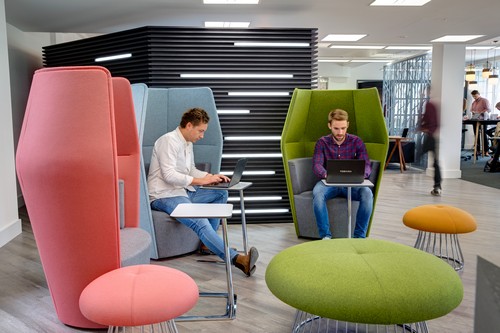
Open-plan offices are now the norm, and rightly so. This type of office layout promotes collaboration and creativity that was less common in partitioned cubicle offices. Open-plan offices are however louder than their counterparts. We’re not suggesting that you change to cubicles as privacy and quiet areas can be achieved in a modern open office too.
Office acoustic pods are the best solution for creating quiet spaces for offices, without taking up much space, either. The self-contained private workspace with acoustic properties helps to zone out surrounding noise, making them a great place to work without distractions.
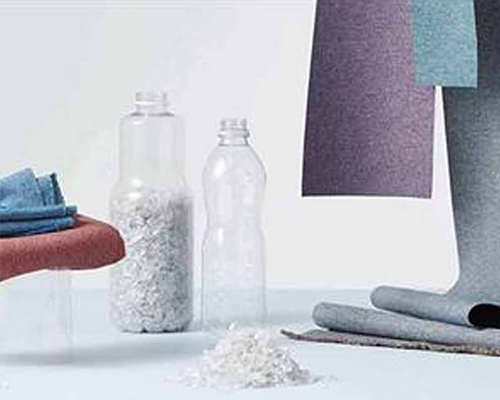
The UK’s premier commercial seating fabric manufacturer Camira, who are based in West Yorkshire, have recently launched a new fabric called Rivet. Here’s everything you need to know.
Green credentials: Waste plastic is on the news agenda at present with Sky TV’s Sky Ocean Rescue campaign hoping to rid the oceans of plastic and Sir David Attenborough calling for the world to cut back on its use of plastic in order to protect our oceans.
You can do your bit for the environment by upholstering your seating in Rivet fabric. Rivet is made from recycled polyester from used plastic drinks bottles which are turned in to flake and then melted down into resin which is extruded into fibre. This is then used to create the yarn used in the Rivet fabric range. 22 plastic 500ml bottles make one metre of fabric.
Colour palette: 33 colours ranging from muted tonal shades through to bold darker colours. The lightly textured hopsack fabric has a ‘flecked’ appearance which helps to mask any stains. The fabric has been inspired by luxury tailored suits.
Applications: May be used to upholster both task seating and soft seating so you can coordinate the seating in your offices and breakout spaces.
Pricing: Good news, Rivet is in the lowest fabric price band making it an economical choice for your seating upholstery.
Manufacture: Woven in the UK where all the best fabrics and office furniture is made.
If you would like to know more about Rivet fabric and also the seating it can go on please get in touch.
By now, hopefully, you will now want to see what colours are available? Well there is a great swatch card so please get in touch and I will send you a copy free of charge. Email me direct mark@lismark.co.uk or call for a chat on 0116 251 7741.
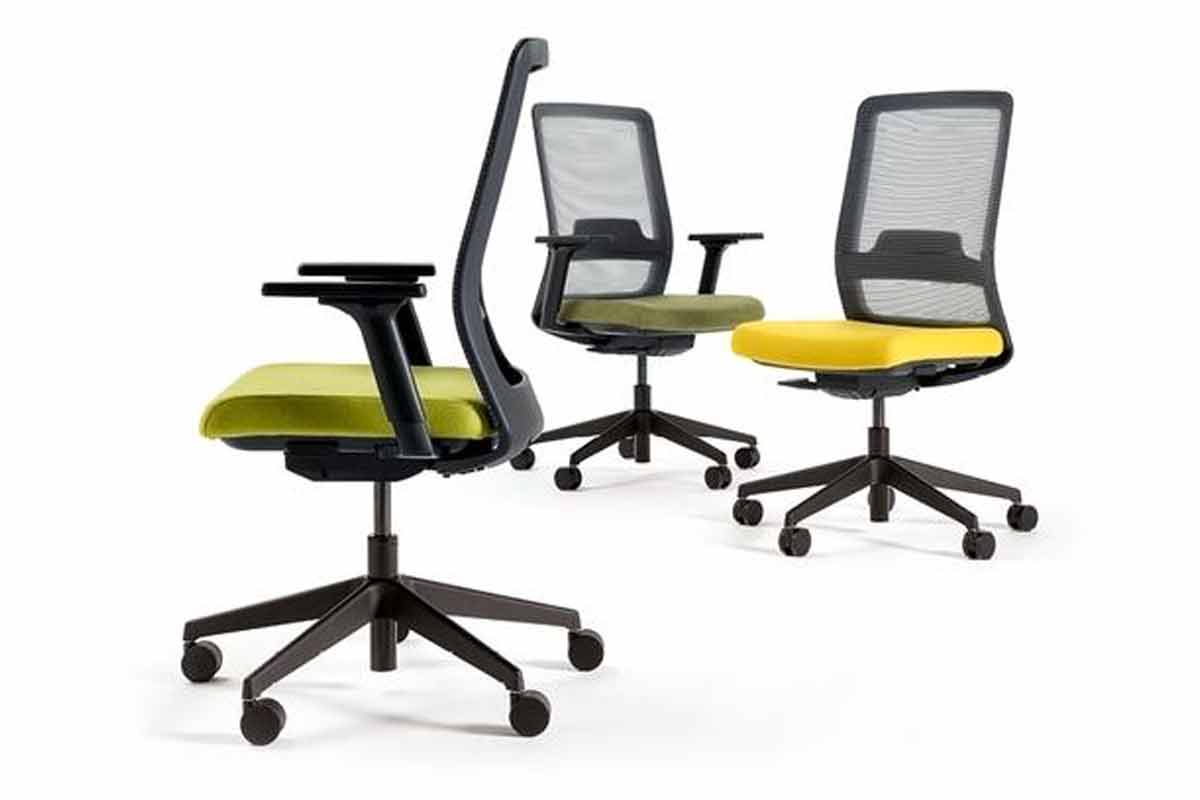
One of our favourite manufacturers Verco who are based in High Wycombe has just launched a brand new chair called the Max.
Technical bit coming up:
The Max is a task chair with a mesh back and an upholstered seat. The back is fitted with a deluxe ‘active’ grey mesh which provides support and adapts to the contours of your back comes with an adjustable lumbar support as standard. The seat is shaped to aid comfortable sitting and has a ‘waterfall’ edge which means that it doesn’t press into the backs of your knees and thighs. The seat has a seat depth adjustment as standard which means that it suits people of all heights. The action of the chair is designed to be left in ‘free float mode’ meaning that the backrest is moving with you as you move whilst seated. The chair senses your body weight and automatically adjusts to provide the perfect support. This makes the Max easy to use. I hope I haven’t made that sound too technical!
Looks:
The first thing that strikes you about the Max is that it is a good looking chair. Faced straight on it has smart straight lines. Looking from the side of the chair shows the curved back and neat behind with no ugly bolts showing. The mechanism under the chair is slim, neat and doesn’t show too much beneath the chair. The fact that there is only one lever below also helps with the clean looks of the chair.
Options:
Simple as possible, the only options are height adjustable arms, headrest, polished metal base (I think it look’s great with the standard black base though!).
Upholstery:
Upholstered in the new Rivet fabric from Camira the seat would look great, with the advantage of Rivet being a band a fabric which means it is in the lowest price band.
My opinion:
A good looking chair which is a step up looks wise on Verco’s existing Mesh chair range. The Max is simple to use, which always helps. The headrest option is ideal for managers. When I look at the competitors in the marketplace the Max is very keenly priced for such a good looking chair.
If I have whetted your appetite, there’s a great brochure available which shows the Max off. If you would like a copy please drop me a line at mark@lismark.co.uk.